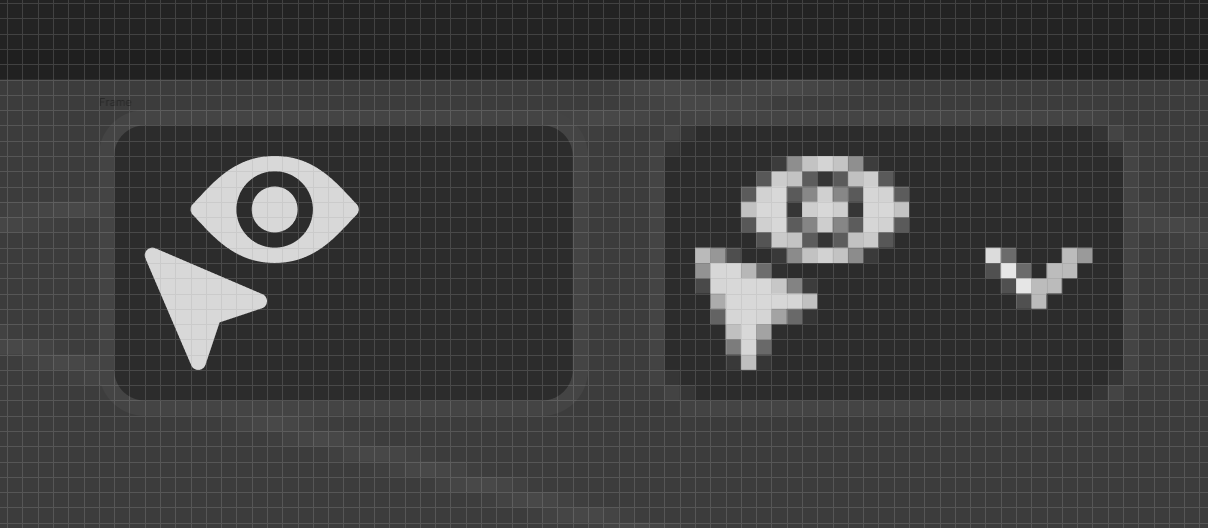The original file had grids made of geometry that were aligned to the pixel grid, fortunately we’re not really losing anything there (as far as I can tell anyways…) but I agree that setting up guides to show the 3px of padding would probably be useful, at least for a template file. Alignment should be enforced by turning on the align to grid option in your vector editor of choice, the viewbox of the SVG handles that for us pretty nicely I think? This is a convenient segue to the next point!
These are 20x20 pixels and I would rather they be larger, for example 1000x1000.
As a designer I find it extremely helpful to have the icon size authored at its 1x resolution, this helps me optimize its rasterization for the scale it will be displayed at and by ensuring shapes are aligned to the pixel grid. Some programs like Affinity Designer and Illustrator have the nice ability to preview the rasterized output directly in the file, regrettably I don’t believe Inkscape has this feature but I could be wrong, I don’t use it much!
In this Figma screenshot we can see how the vector geometry for ‘visual_selection_selectable’ aligns to the pixel grid in the same way as Blender renders it on the right, how nice!
Font files are a fine way to author and store icons but if you’re going to do this I would advise you set up separate fonts with their own corresponding metrics for each set of icons present in Blender instead of trying to unify them all to one? This way each icon can be best designed for its use case & output size.
